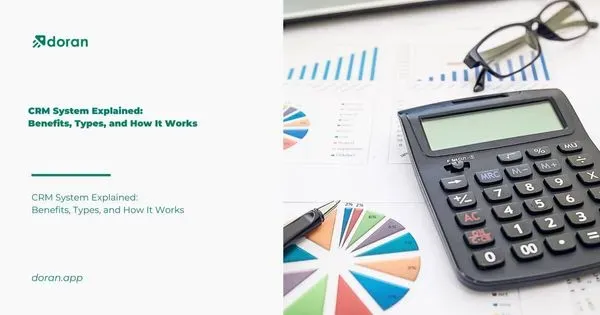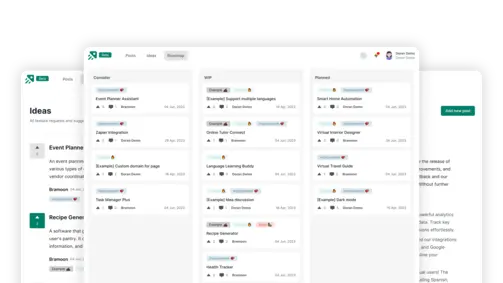Employee NPS score: What it is and How to Improve
Create changelog and product roadmap for your product
Explore nowTable of contents 7 min
In the realm of employee engagement, the Employee NPS score (eNPS) has emerged as a pivotal metric, offering organizations a profound insight into the satisfaction and advocacy of their workforce. This article delves into the significance of the Employee NPS score, shedding light on how businesses can measure and interpret this metric to enhance workplace dynamics.
What is the Net Promoter Score (eNPS) for employees?

Measuring the employee NPS score is a valuable way to evaluate an organization’s level of employee engagement. This metric gauges the likelihood of your employees recommending your organization as a great place to work to their friends or family.
This metric provides insight into the happiness and satisfaction levels of your employees, as well as the probability of them remaining with and advocating for your company.
According to a recent Gallup survey, companies that have a highly engaged workforce experience 21% higher profitability and 17% greater productivity compared to those with disengaged employees. This highlights the significance of grasping your employees’ engagement and pinpointing potential issues before they affect business profitability.
Comparison between eNPS and NPS
The eNPS is similar to NPS, a method used to assess customer loyalty and satisfaction by inquiring about customers’ likelihood to recommend a company’s products or services to their loved ones. While eNPS and NPS evaluate the satisfaction levels of various groups, the scores typically show a link.
An organization that maintains a high employee NPS score score is typically correlated with a high NPS score. This is because content employees tend to be more satisfied with their roles, leading to improved customer service.
Read more: Employee NPS Survey: Engaging Your Internal Team for Success
Why is eNPS measurement important? Benefits of measuring eNPS
The employee NPS score score is a quick way to gauge your employee engagement levels and respond promptly.
When utilized to gauge your employees’ sentiments and opinions regarding their employment at your organization, there are both benefits and drawbacks:
Benefits of Employee Net Promoter Score (eNPS)
-
Convenience: Employees can complete tasks without excessive time and effort.
-
Considerable participation rate: With the eNPS being quick and easy to answer, you can anticipate full participation from your staff in the survey.
-
Rapid response: eNPs survey data can be collected and analyzed quickly, enabling prompt sharing of results and development of action plans. Being able to respond quickly helps to deal with problems before they become bigger.
-
Honest feedback: The answer to the question regarding the likelihood of employees recommending the company as a workplace accurately represents their feelings about their employer. Respondents have the option to complete the survey without revealing their identity, which encourages them to provide honest feedback about their job contentment and grievances.
-
Continuous measurement: Measuring employee engagement continuously is made easier with the eNPS survey, which can be quickly deployed for more frequent assessments, enabling consistent monitoring of employee engagement.
Drawbacks of Employee Net Promoter Score (eNPS)
-
Limited results: Results are limited as the question does not consider other factors of employee engagement such as employee motivation and employee retention. Employee NPS score does not address these essential concepts that are crucial to the organization’s people strategy and engagement.
-
Limiting approach: Passives are not considered, which may result in an inaccurate employee NPS score reflecting the company’s engagement level.
-
Overemphasizing the score: Having just one number to gauge employee engagement can limit the ability to interpret the outcome without additional context. HR lacks qualitative data to complement the quantitative eNPS score.
How is eNPS measured? Methods used to calculate eNPS
Below are the steps to follow for conducting and measuring your employee NPS score:
Step 1: Conduct a Survey
Human Resources can utilize a standardized eNPS survey that prompts employees to rate how likely they are to recommend their company on a scale of 0 to 10.
Step 2: Organize the Responses into Categories
After finishing the survey, HR needs to categorize employee responses and perform the necessary calculations.
Human Resources tip:
Organize feedback into themes: Evaluate the input from team members and categorize related comments under common themes. This will assist in pinpointing typical problems and opportunities for enhancement.
Step 3: Analyze the Results Obtained
After calculating employee NPS score, HR needs to carefully analyze the results and pinpoint areas that need improvement. Examining trends over time, analyzing eNPS scores across various teams or departments, and utilizing open-ended survey responses to pinpoint specific issues that require attention.
Through consistent employee NPS score measurement and proactive response to identified areas for enhancement, HR plays an indispensable role in enhancing employee engagement and satisfaction, ultimately resulting in increased retention, productivity, and business success.
Pro tip for HR professionals:
Request input from managers and leaders: Besides the employee NPS survey, ask for feedback from managers and leaders within the organization. This can offer valuable insights into the areas where the workplace is performing well and where enhancements can be implemented. Moreover, managers and leaders play a crucial role in executing action plans derived from the survey findings.
Calculation of the employee Net Promoter Score

The employee NPS score is determined based on the ratings provided by employees on a scale of 0-10, which are then divided into three categories:
-
Promoters: Employees who rated your company with a score of 9 or 10, indicating their happiness and satisfaction
-
Passive or Neutral: Employees who rated 7 or 8 may either promote the company or speak negatively about it.
-
Detractors: Employees who rated the company between 0 to 6, indicating dissatisfaction and unhappiness.
Next, examine the number of employees in each category and their percentage of the total.
Here is the formula to calculate the Employee Net Promoter Rating:
eNPS = % promoters – % detractors
Find out more: Choosing the Right NPS Survey Tool for Your Business
How to Improve Employee NPS score
If your employee NPS score scores are low, here are some strategies to help improve them:
Explore the Potential Causes for Low Ratings
Organize meetings or send follow-up emails. Inquire about ways management can support promoting the company as an excellent place to work. Asking additional questions can also be useful in identifying the reasons behind employee dissatisfaction with the company. Ensure employees feel valued by encouraging them to share suggestions for enhancing the work environment.
Regularly Conduct Employee Feedback Surveys
Surveys are valuable tools for HR teams to pinpoint areas within the organization that require enhancement, including training, communication, leadership, and work culture. Sharing the survey results with the organization and communicating any action plans to address the issues is crucial.
Implement Changes based on Survey Results
For instance, if a large number of respondents are interested in career progression, consider enhancing your company’s learning and development programs. Discover various training delivery methods such as mentorship or job rotation in addition to classroom and virtual training.
Employee net promoter scores vary by industry. According to research from Perceptyx, the general employee NPS score benchmark stands at 12, whereas other sources suggest that the average eNPS is 14 among organizations collecting staff data to assess employee NPS score.
What is a Good eNPS Score?

They have conducted research on employee NPS score benchmarks for the sectors listed below:
-
Telecommunications: 27
-
Manufacturing: 13
-
IT: 26
-
Healthcare: – 6.5
While the average eNPS benchmark for tech companies stands at 26, numerous companies in the industry boast eNPS scores of 75 or above.
As we wrap up this investigation into employee NPS score (eNPS), it is clear that a committed and content workforce is essential for a successful organization. Through analyzing and utilizing eNPS data, companies can enhance their employee connections, elevate spirits, and foster a setting that promotes productivity and creativity. Achieving a high Employee NPS score involves creating a workplace where every team member is not just an employee but a passionate advocate for your organization’s success.
What to not miss out on our blog
Gain insightful knowledge and invaluable experiences from dedicated experts.

CRM System Explained: Benefits, Types, and How It Works
Discover everything about CRM system. Learn the benefits and how a CRM system works to improve customer relationships and streamline business operations.

Are you ready? Start your free trial today.
Enhance communication, keep track of the progress, understand customers' insight and more by taking your first trial on Doran.
Sign up for free

